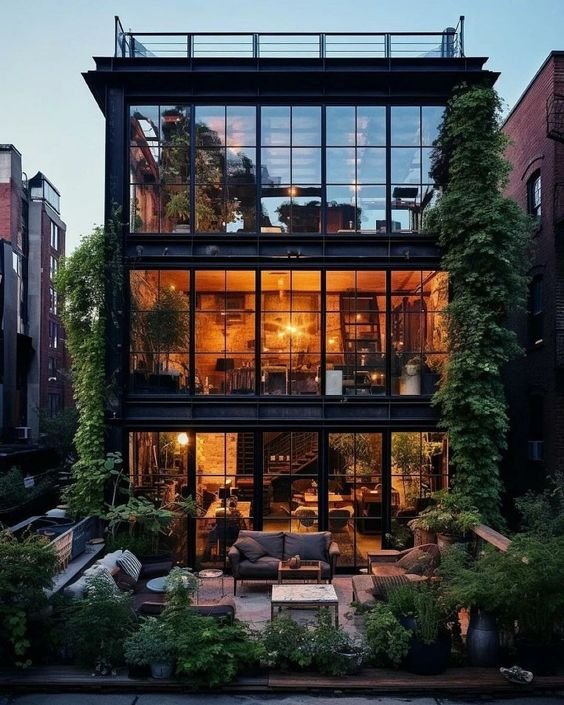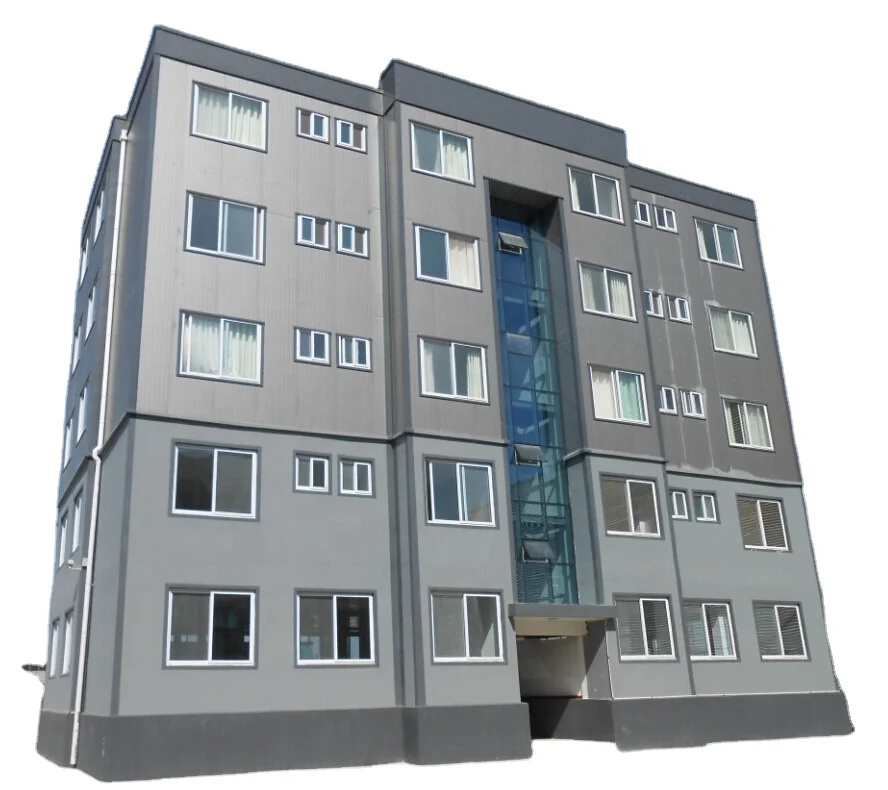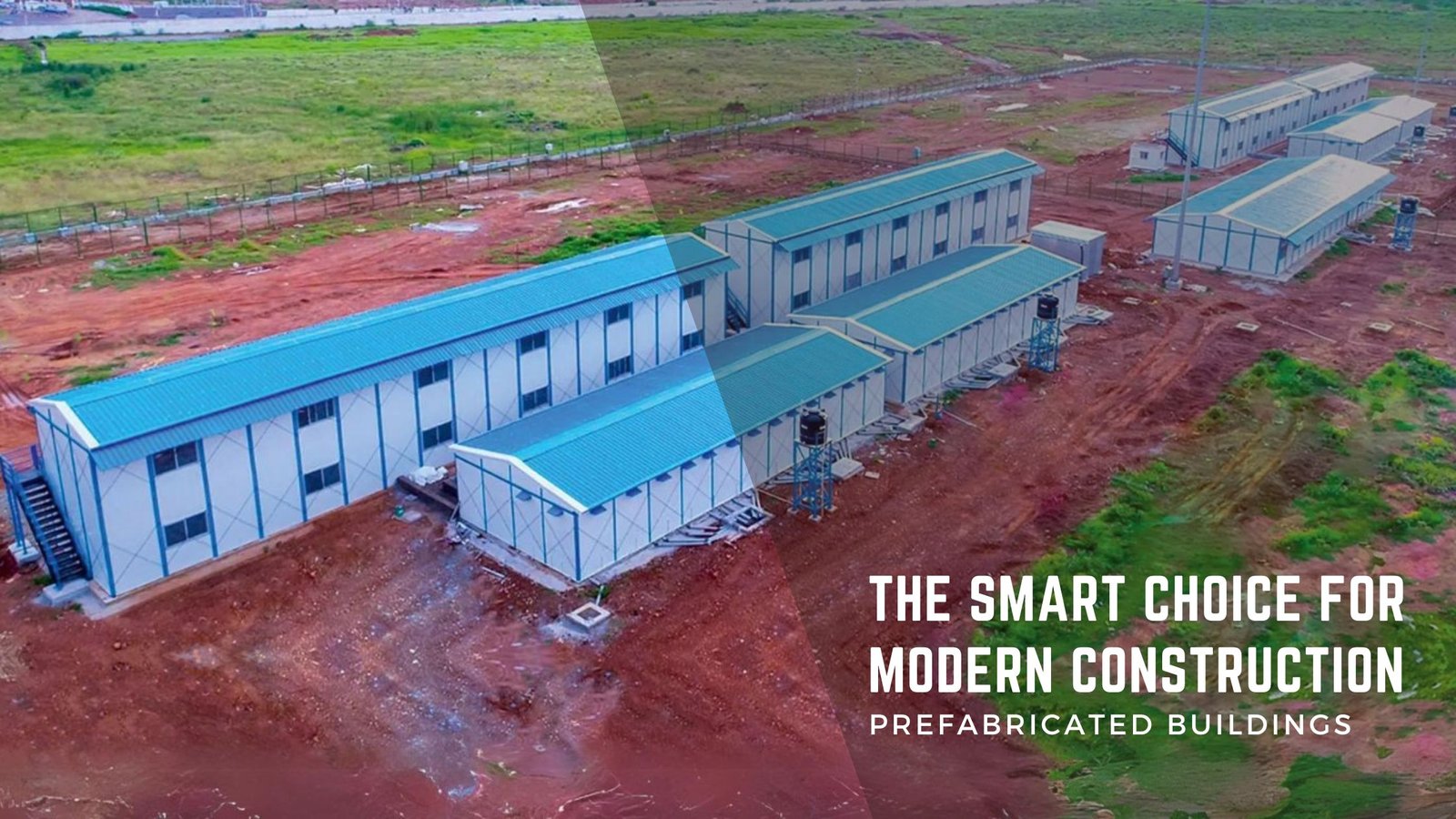
Pre-Engineered Buildings for Industrial and Commercial Application

Applications of Pre-Engineered Steel Buildings
Outline:
- Introduction
- Understanding Pre-Engineered Steel Buildings (PESB)
- Houses & Living Shelters
- Residential applications of PESB
- Factories
- Industrial use of PESB
- Warehouses
- Storage solutions with PESB
- Sports Halls
- Indoor and outdoor sporting facilities
- Aircraft Hangars
- Aviation infrastructure with PESB
- Supermarkets
- Commercial spaces utilizing PESB
- Workshops
- Utilization in automotive and mechanical workshops
- Office Buildings
- Corporate structures with PESB
- Labor Camps
- Accommodation for large workforces
- Petrol Pumps/Service Buildings
- Convenience stores and service stations
- Schools
- Educational institutions employing PESB
- Community Centers
- Gathering places for communities
Applications of Pre-Engineered Steel Buildings
If you’re considering construction projects, you’ve likely come across the term Pre-Engineered Steel Buildings (PESB). These structures offer versatile solutions across various sectors due to their durability, cost-effectiveness, and rapid assembly. Let’s delve into the myriad applications of PESB:
1. Houses & Living Shelters
PESB finds its place in the residential sector, offering robust housing solutions. From single-family homes to multi-story apartments, steel buildings provide flexibility in design, longevity, and resistance to natural elements.
2. Factories
Industries benefit greatly from the use of PESB for their manufacturing facilities. Steel buildings offer ample space, allowing for efficient workflow and customization to accommodate heavy machinery and production lines.
3. Warehouses
In the realm of logistics and storage, PESB shines bright. Warehouses constructed with steel provide vast open spaces for storing goods, ensuring structural integrity and protection against environmental factors.
4. Sports Halls
Both indoor and outdoor sports facilities utilize PESB due to their spaciousness and versatility. From gymnasiums to indoor arenas and outdoor stadiums, steel structures offer a sturdy framework for sporting events of all scales.
5. Aircraft Hangars
Aviation infrastructure relies heavily on PESB for constructing aircraft hangars. These buildings provide shelter and maintenance facilities for planes, ensuring their protection and upkeep.
6. Supermarkets
Retail spaces, including supermarkets, embrace the use of PESB for their construction. Steel buildings offer expansive layouts, allowing for efficient shelving and display arrangements while maintaining structural stability.
7. Workshops
Mechanical and automotive workshops benefit from the durability and customization options of PESB. These buildings provide ample space for equipment, vehicles, and workspace, ensuring optimal productivity.
8. Office Buildings
Corporate structures often opt for PESB due to their cost-effectiveness and rapid construction. Steel buildings offer modern aesthetics and spacious interiors, accommodating offices, meeting rooms, and common areas.
9. Labor Camps
In sectors requiring temporary accommodation for large workforces, PESB serves as an ideal solution. These buildings can be quickly assembled and provide comfortable living quarters for laborers in remote locations.
10. Petrol Pumps/Service Buildings
Convenience stores and service stations utilize PESB for their construction. Steel buildings offer durable and secure spaces for retail operations, ensuring the safety of personnel and customers.
11. Schools
Educational institutions embrace PESB for their construction projects. Steel buildings provide adaptable spaces for classrooms, laboratories, and administrative offices, ensuring a conducive environment for learning.
12. Community Centers
Gathering places such as community centers benefit from the versatility of PESB. These buildings offer spacious interiors for various activities and events, serving as hubs for social interaction and recreational pursuits.
In conclusion, Pre-Engineered Steel Buildings (PESB) offer a wide array of applications across different sectors, ranging from residential to commercial and industrial. Their versatility, durability, and cost-effectiveness make them a preferred choice for construction projects worldwide.
FAQs
Are Pre-Engineered Steel Buildings customizable?
- Yes, PESB can be customized to meet specific design requirements, including size, layout, and architectural features.
What are the advantages of using steel in construction?
- Steel offers benefits such as strength, durability, sustainability, and ease of maintenance, making it an ideal choice for various building projects.
How long does it take to construct a Pre-Engineered Steel Building?
- The construction timeline for PESB varies depending on factors such as size, complexity, and site conditions but generally, they are quicker to erect compared to traditional construction methods.
Are Pre-Engineered Steel Buildings environmentally friendly?
- Yes, steel is a highly recyclable material, and PESB construction typically generates less waste compared to traditional building methods, making them environmentally sustainable options.
Can Pre-Engineered Steel Buildings withstand extreme weather conditions?
- Yes, steel buildings are known for their resilience and ability to withstand various weather conditions, including high winds, heavy snow loads, and seismic activity.
Unveiling the Marvels of Pre-Engineered Metal Buildings
What is pre-engineered metal building?
Embark on a journey to discover the ingenious world of pre-engineered metal buildings, where innovation meets efficiency in construction.
Exploring the Concept
Dive deep into the foundations of pre-engineered metal buildings and unravel the secrets behind their structural integrity and versatility.
The Evolution of Metal Buildings
Witness the evolution of metal buildings from conventional structures to the modern marvels of pre-engineered designs.
Key Components and Features
Delve into the intricate components and features that make pre-engineered metal buildings the epitome of durability and cost-effectiveness.
What is pre-engineered steel as a building material?
Explore the transformative potential of steel as a building material, revolutionizing the construction industry with its unparalleled strength and adaptability.
Steel: The Building Block of Innovation
Discover how pre-engineered steel serves as the cornerstone of modern construction, offering unparalleled strength, flexibility, and sustainability.
Advantages Over Conventional Materials
Uncover the myriad advantages of using pre-engineered steel in construction projects, from enhanced durability to accelerated project timelines.
What is PEB structure in Pakistan?
Embark on a journey through Pakistan’s architectural landscape as we delve into the realm of Pre-Engineered Building (PEB) structures, shaping the nation’s skyline with efficiency and elegance.
PEB Revolutionizing Construction in Pakistan
Witness the transformative impact of PEB structures on Pakistan’s construction industry, offering cost-effective solutions without compromising on quality.
Applications Across Various Sectors
Explore the diverse applications of PEB structures in Pakistan, from industrial warehouses to commercial complexes, revolutionizing the country’s infrastructure.
What is the pre-engineered building process?
Step into the world of pre-engineered building processes and uncover the systematic approach to designing, fabricating, and erecting these architectural wonders.
Designing for Efficiency and Precision
Discover the meticulous design process behind pre-engineered buildings, optimizing every aspect for efficiency, functionality, and aesthetic appeal.
Fabrication and Assembly
Explore the seamless fabrication and assembly process of pre-engineered buildings, where precision engineering meets skilled craftsmanship.
What is the difference between PEB and RCC?
Navigate the nuances between Pre-Engineered Buildings (PEB) and Reinforced Concrete Construction (RCC), understanding their distinct advantages and limitations.
PEB vs. RCC: A Comparative Analysis
Delve into the comparative analysis of PEB and RCC, evaluating factors such as cost-effectiveness, construction timelines, and structural integrity.
Choosing the Right Construction Method
Empower yourself with the knowledge to make informed decisions between PEB and RCC, based on project requirements, budget constraints, and long-term sustainability.
What is the advantages of pre-engineered steel structures?
Unveil the multitude of advantages offered by pre-engineered steel structures, revolutionizing the construction industry with their efficiency, durability, and sustainability.
Cost-Effectiveness and Time Efficiency
Discover how pre-engineered steel structures offer significant cost savings and accelerated project timelines, making them the preferred choice for modern construction projects.
Enhanced Durability and Structural Integrity
Explore the superior durability and structural integrity of pre-engineered steel structures, capable of withstanding extreme weather conditions and seismic activity.
What is the difference between PEB and structural steel?
Navigate the nuances between Pre-Engineered Buildings (PEB) and traditional structural steel constructions, understanding their unique characteristics and applications.
PEB: Streamlined Construction Process
Learn how PEB streamlines the construction process with pre-designed components, offering rapid assembly and cost savings compared to traditional structural steel constructions.
Structural Steel: Versatility and Customization
Explore the versatility and customization options offered by traditional structural steel constructions, catering to complex architectural designs and unique project requirements.
What is an example of a pre engineered building?
Embark on a virtual tour of iconic pre-engineered buildings around the world, showcasing the diverse applications and architectural marvels of this innovative construction method.
Iconic Pre-Engineered Buildings
From sprawling industrial complexes to futuristic sports arenas, explore iconic examples of pre-engineered buildings that redefine the boundaries of modern architecture.
Case Studies and Success Stories
Dive into real-life case studies and success stories of pre-engineered buildings, highlighting their efficiency, durability, and cost-effectiveness across various industries.
What are the disadvantages of pre engineered buildings?
Navigate the potential drawbacks of pre-engineered buildings, addressing concerns related to design limitations, customization constraints, and long-term maintenance.
Design Limitations and Customization Constraints
Explore the design limitations and customization constraints associated with pre-engineered buildings, which may pose challenges for architects and designers seeking unique architectural solutions.
Long-Term Maintenance Considerations
Delve into the long-term maintenance considerations of pre-engineered buildings, including corrosion protection, structural inspections, and repairs, to ensure their continued durability and safety.
FAQs
Are pre-engineered metal buildings suitable for residential construction? Pre-engineered metal buildings are highly versatile and can be adapted for residential construction, offering cost-effective and durable housing solutions.
What are the environmental benefits of pre-engineered steel structures? Pre-engineered steel structures are environmentally friendly, as steel is a recyclable material with a low carbon footprint, reducing waste and minimizing environmental impact.
Can pre-engineered buildings withstand extreme weather conditions? Yes, pre-engineered buildings are designed to withstand extreme weather conditions, including high winds, heavy snow loads, and seismic activity, ensuring the safety and integrity of the structure.
How long does it take to construct a pre-engineered metal building? The construction timeline for pre-engineered metal buildings varies depending on the size and complexity of the project but is generally shorter than traditional construction methods, thanks to the streamlined design and fabrication process.
What are the cost implications of choosing pre-engineered steel structures? Pre-engineered steel structures offer significant cost savings compared to traditional construction methods, thanks to their streamlined design, efficient fabrication process, and reduced construction timelines.
Are pre-engineered buildings customizable to suit specific design requirements? While pre-engineered buildings offer some degree of customization, there may be limitations compared to traditional construction methods, particularly for complex architectural designs requiring intricate detailing.
Conclusion
In conclusion, pre-engineered metal buildings stand as a testament to innovation and efficiency in the construction industry, offering unparalleled durability, cost-effectiveness, and sustainability. From iconic architectural landmarks to everyday commercial structures, the versatility and adaptability of pre-engineered buildings continue to shape the future of construction, paving the way for a more efficient and sustainable built environment.
Outline for the Article:
Heading Subheading Understanding Pre-engineered Buildings Definition of Pre-engineered Buildings Benefits of Pre-engineered Buildings Common Features of Pre-engineered Buildings Differences between PEB and Traditional Steel Structures Structural Composition Design Flexibility Construction Process Examples of Pre-engineered Buildings Industrial Facilities Commercial Structures Agricultural Buildings Comparing Prefabricated and Pre-engineered Buildings Construction Methods Customization Options Durability and Strength Cost-effectiveness Eco-friendliness FAQs What are the main advantages of pre-engineered buildings? Can pre-engineered buildings be customized? Are pre-engineered buildings suitable for residential use? How long does it take to construct a pre-engineered building? What are some notable examples of pre-engineered buildings? Is there a difference between prefabricated and pre-engineered buildings? Now, let’s proceed with the detailed article.
Pre-engineered Buildings: Revolutionizing Construction
SEO Meta Description: Discover the meaning of pre-engineered buildings, the differences between PEB and traditional steel structures, examples of pre-engineered buildings, and the comparison with prefabricated buildings.
Introduction
In the realm of construction, pre-engineered buildings (PEBs) have emerged as a revolutionary solution, offering efficiency, versatility, and durability. Understanding their significance and distinguishing them from traditional steel structures is crucial for anyone involved in the construction industry or contemplating building projects.
Understanding Pre-engineered Buildings
Pre-engineered buildings, commonly referred to as PEBs, are structures fabricated off-site and assembled on-site. They are engineered to meet specific design requirements, utilizing advanced techniques and materials for optimal performance.
Definition of Pre-engineered Buildings
Pre-engineered buildings are meticulously designed and manufactured in controlled environments, ensuring precision and quality. This method streamlines the construction process, reducing time and labor costs.
Benefits of Pre-engineered Buildings
PEBs offer numerous advantages, including rapid construction, cost-effectiveness, and flexibility in design. Additionally, their lightweight yet robust nature makes them ideal for various applications, from warehouses to sports complexes.
Common Features of Pre-engineered Buildings
These structures typically feature clear span interiors, allowing for uninterrupted floor space. They can be customized to accommodate specific functional and aesthetic requirements, with options for insulation, finishes, and architectural details.
Differences between PEB and Traditional Steel Structures
While both PEBs and traditional steel structures utilize steel as a primary material, several distinctions set them apart in terms of composition, design, and construction methods.
Structural Composition
Traditional steel structures often involve on-site fabrication and welding of steel components, whereas PEBs are prefabricated and assembled using standardized parts, enhancing efficiency and consistency.
Design Flexibility
PEBs offer greater design flexibility, allowing for tailored solutions to suit diverse architectural styles and functional needs. Traditional steel structures may require more time and resources for customization.
Construction Process
The construction process for PEBs is expedited due to prefabrication, leading to shorter project timelines and reduced labor costs. Traditional steel structures may involve more complex assembly on-site, potentially extending construction schedules.
Examples of Pre-engineered Buildings
PEBs have been deployed across various sectors, showcasing their versatility and adaptability to different environments and purposes.
Industrial Facilities
Warehouses, factories, and distribution centers are prime examples of pre-engineered industrial buildings, where efficiency and scalability are paramount.
Commercial Structures
From retail outlets to office complexes, pre-engineered commercial buildings offer cost-effective solutions without compromising on quality or aesthetics.
Agricultural Buildings
Farm structures such as barns, silos, and equipment shelters benefit from the durability and versatility of pre-engineered solutions, ensuring optimal protection for agricultural assets.
Comparing Prefabricated and Pre-engineered Buildings
While prefabricated and pre-engineered buildings share similarities in off-site construction, they serve distinct purposes and exhibit different characteristics.
Construction Methods
Prefabricated buildings are assembled from pre-made components, whereas pre-engineered buildings are tailored to specific designs and engineered for structural integrity.
Customization Options
Pre-engineered buildings offer greater customization options, allowing for tailored solutions to meet unique requirements. Prefabricated buildings may have limited flexibility in design and functionality.
Durability and Strength
PEBs are engineered for durability and strength, utilizing high-quality materials and advanced construction techniques. Prefabricated buildings may vary in quality and structural integrity depending on the manufacturer.
Cost-effectiveness
While both options can be cost-effective, pre-engineered buildings often offer greater value due to their efficiency in construction and long-term durability, minimizing maintenance costs over time.
Eco-friendliness
PEBs are environmentally friendly due to their efficient use of materials and energy during construction. Prefabricated buildings may also offer sustainability benefits depending on the materials used and manufacturing processes.
FAQs
What are the main advantages of pre-engineered buildings? Pre-engineered buildings offer rapid construction, cost-effectiveness, and versatility in design, making them ideal for various applications.
Can pre-engineered buildings be customized? Yes, pre-engineered buildings can be customized to meet specific architectural and functional requirements, offering flexibility in design and layout.
Are pre-engineered buildings suitable for residential use? While pre-engineered buildings are commonly used for commercial and industrial purposes, they can also be adapted for residential construction, providing durable and efficient housing solutions.
How long does it take to construct a pre-engineered building? The construction timeline for a pre-engineered building depends on factors such as size, complexity, and site conditions, but it is typically shorter compared to traditional construction methods.
What are some notable examples of pre-engineered buildings? Notable examples of pre-engineered buildings include aircraft hangars, sports arenas, and shopping malls, showcasing the versatility and adaptability of this construction method.
Is there a difference between prefabricated and pre-engineered buildings? While both involve off-site construction, pre-engineered buildings are specifically engineered for structural integrity and tailored to meet specific design requirements, whereas prefabricated buildings may offer standardized solutions with limited customization.
Conclusion
Pre-engineered buildings represent a paradigm shift in construction methodology, offering unparalleled efficiency, durability, and versatility. By understanding their unique advantages and applications, stakeholders in the construction industry can harness the full potential of PEBs to realize their building projects’ success.
- Yes, steel buildings are known for their resilience and ability to withstand various weather conditions, including high winds, heavy snow loads, and seismic activity.




